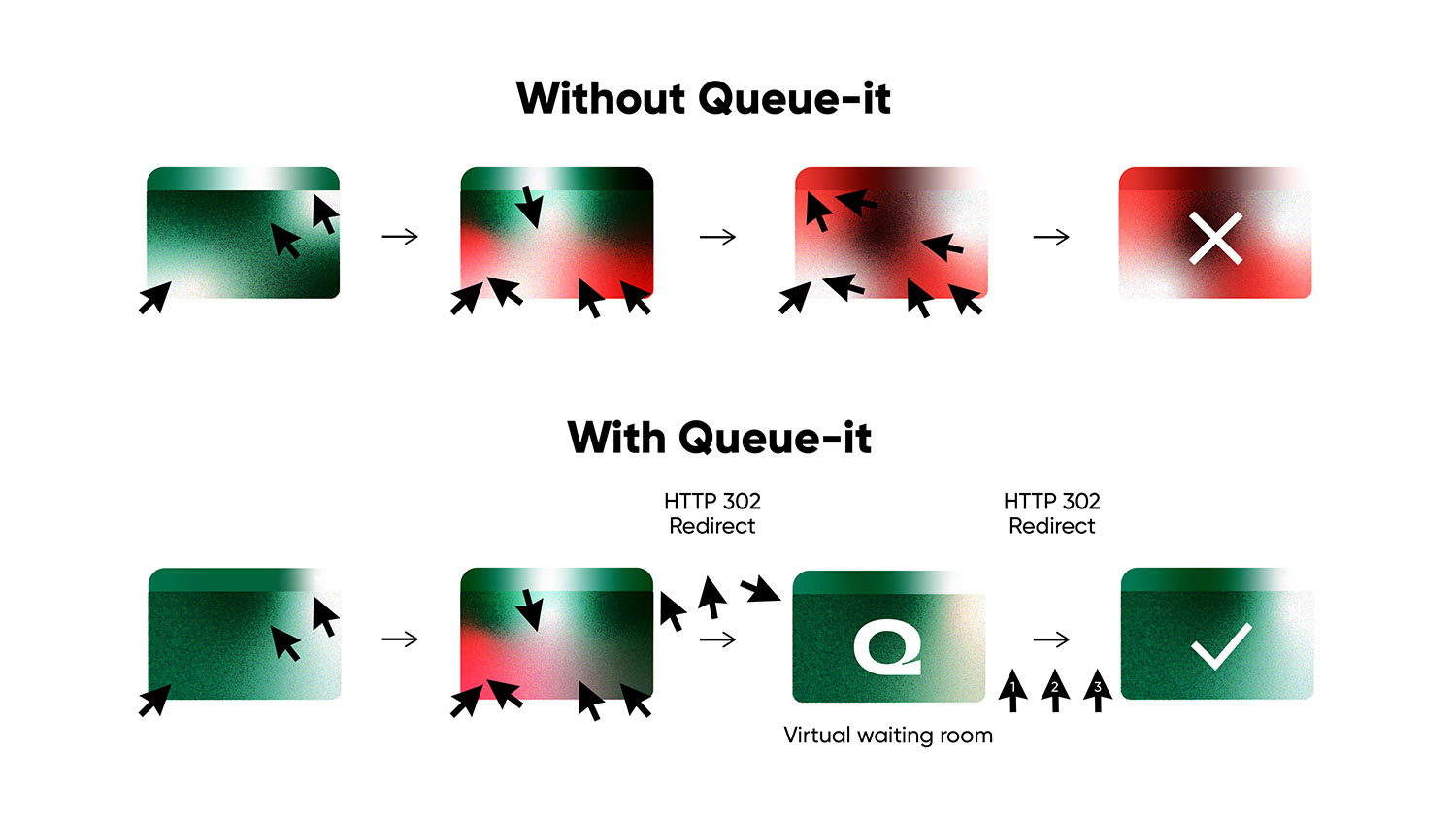16%
of citizens believe government successfully uses technology to improve customer experiences
18%
of citizens believe customer experience is prioritized in government
60%
of citizens think governments need to modernize how they deliver services

- In peak situations customers will be sent to your branded waiting room with an HTTP 302 redirect
- While in the waiting room visitors are on Queue-it's infrastructure & see clear wait information
- Once it's their turn they're flowed back to your site with another HTTP 302 redirect & have a secure token confirming they've been through the queue

- Give customers peace of mind with transparent wait info like place in line & estimated wait time
- Communicate in real time to set expectations, let customers know what inventory’s left & share updates on registration progress
- Let customers plan their time & be productive while they wait with email notifications when it’s their turn
- Get key metrics in real time like traffic inflow per minute, when the queue kicked in, average wait time, and number of customers waiting
- Share easy-to-understand charts & graphs with real-time data so technical & non-technical stakeholders know exactly what’s going on
- Whitelist IP addresses so your support teams, call centers, or external partners have direct access to your site to support customers & verify website performance

76%
of customers say registrations are less stressful with Queue-it
69%
of customers say they see fewer customer complaints for registrations with Queue-it in place
37%
average reported savings on server scaling with Queue-it in place
* Based on 214 survey responses from Queue-it customers (2023 & 2024). See the results.
- Tax filings
- Government rebates
- Immigration applications
- Vaccination registrations
- Driving test bookings
- Recreational reservations
Queue-it complies fully with GDPR, CCPA, HIPAA and PCI DSS legal frameworks. You can choose whether your servers reside in the European Union, United States, Brazil, South Korea, or Japan, based on your requirements.
Except end-users’ IP addresses and browser versions, our virtual waiting room does not have access to payload data and no sensitive data is routed through our system.















